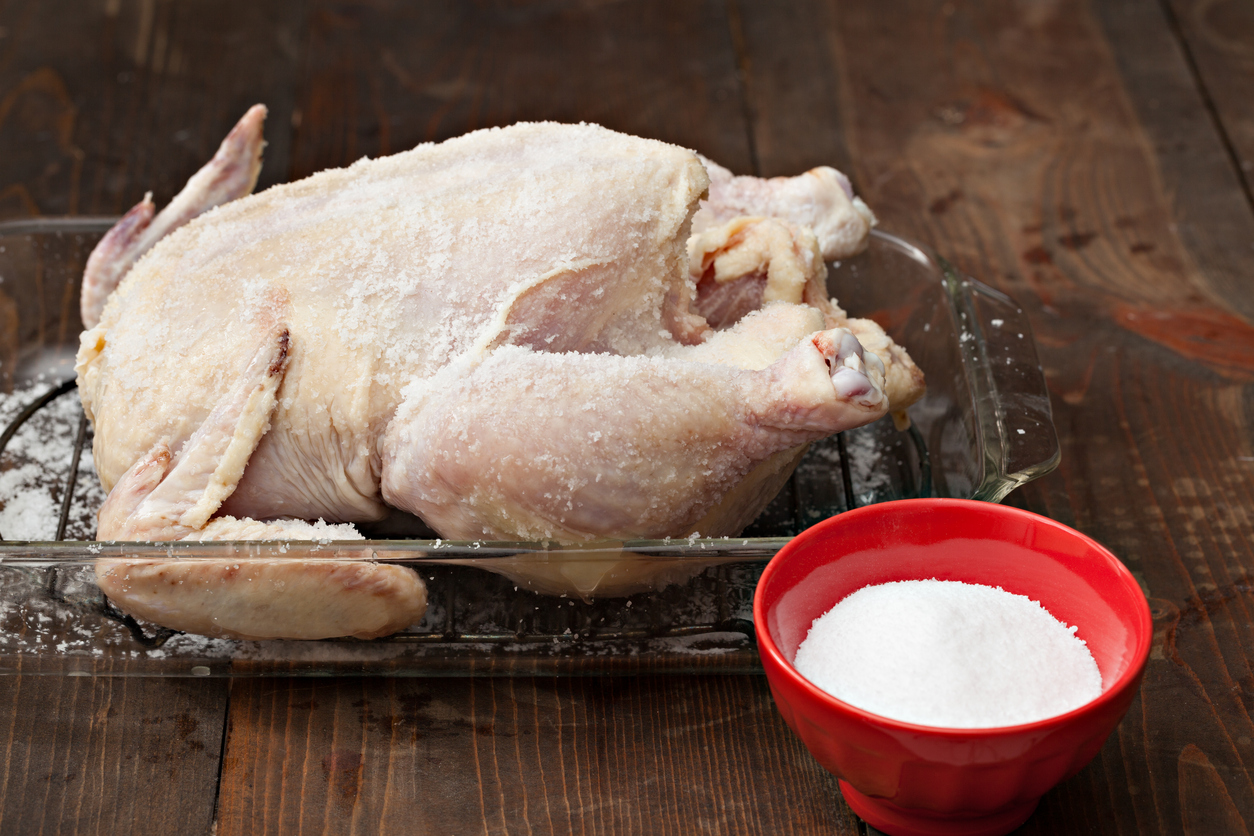The Secret For Perfectly Cooked Chicken Breasts Is Dry Brining
It's easy to have a love-hate relationship with chicken breasts. When cooked properly and well-seasoned, it's the perfect template for a wide variety of flavors and dishes. However, nothing is more disappointing than a dry, tasteless piece of poultry. But even basic chicken preparations can be improved with one straightforward technique, and it's a kitchen hack that all home cooks have to know.
Whenever making chicken, whether it's a boneless breast, thigh, or a whole bird, always make sure to use a dry brine that's loaded with kosher salt. Whether the meat is destined for grilling, roasting, frying, or searing, this technique results in juicer and tastier chicken that has exponentially better texture. Not so familiar with dry brines or what precisely they do? Well, let us explain.
When chefs refer to dry brining, they mean covering raw chicken in a salt mixture and giving it time to sit before it cooks. And yes, you can use this technique on any type of meat! This trick accomplishes the same benefits that are associated with the more recognized wet brine, but it's faster and much less messy. (No one likes having a huge container of meat submerged in a liquid hanging out in their refrigerator.)
The salt used in dry brines helps draw out moisture in proteins. Why is this important? Well, less moisture translates to more flavor, meaning your brined chicken breast will taste extra-chickeny when cooked. This process is easy and doesn't require much time either. Even a short 20-minute brine will transform a wet, drooping piece of poultry into something that is plump and firm. If you have the time, though, leave it in your refrigerator for a few hours (but no longer than overnight) for a game-changing experience.
Don't be concerned that dry brining will result in a too-salty flavor or an excess of sodium — you rinse the salt off before cooking. For more tips, check out these 12 reasons salt is actually good for you.

